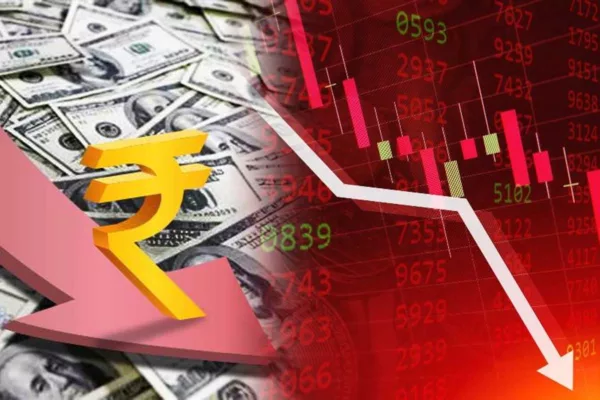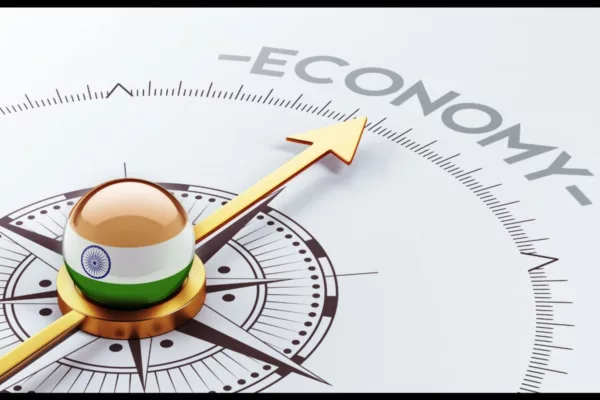Rupee May Continue To Experience Depreciation Pressure: Economic Survey.

Rupee May Continue To Experience Depreciation Pressure: Economic Survey.
Since exports have levelled down, the current account deficit has widened. As a result, the Economic Survey 2022-23 given to Parliament on January 31 predicts that the Indian rupee may continue to experience depreciation pressure. It stated that there are numerous causes of risk to the current account balance.
Due to a more significant trade imbalance, India’s current account deficit (CAD) grew to 4.4% of the country’s gross domestic product in the quarter that ended in September, up from 2.2% in the previous three-month period, which according to the most recent data from the Reserve Bank of India. The significant outflow of foreign funds and a lacklustre trend in domestic stocks caused the rupee to fall 12 paise, bringing its value against the US dollar to 81.64 cents at the start of trade on Tuesday.

The Indian rupee has fallen to a new all-time low against the US dollar, surpassing the 83 mark due to the geopolitical climate and the Federal Reserve’s tightening of monetary policy. Despite falling from record highs, according to the Survey, commodity prices are still higher than “pre-conflict” (Russia-Ukraine war) levels. It was stated that India’s total import bill would increase due to increasing domestic demand and commodity prices, adding to unfavourable trends in the current account balance.
“Slowing global demand may contribute to stalled export growth, which could exacerbate these issues. If the current account deficit increases further, the currency may experience depreciation pressure “The significant paper, released the day before the Union Budget 2023–24 was unveiled, made this statement.
The Survey is a government analysis of economic trends and associated topics for 2022–2023. According to the Economic Survey 2022–23, presented on Tuesday by Finance Minister Nirmala Sitharaman, the challenge of rupee depreciation continues, given the possibility of more interest rate increases by the US Federal Reserve.
The Economic Survey further stated that the INR might face additional pressure if India’s Current Account Deficit (CAD) widens due to persistently high global commodity prices and robust economic growth momentum. Anuj Gupta, a commodity and currency analyst, stated that any rate increase by the US Fed would likely boost the dollar’s value relative to other currencies.

Over the next three days, he expects the rupee to fluctuate between 81 and 82 against the green. According to Gupta, Vice President (VP) of Commodity and Currency Research at IIFL Securities, the US Central Bank might decrease the rate hike pace, preventing the rupee from falling much. According to Gupta, the Budget 2023 announcements should support business and industry, strengthening the INR relative to the USD.
According to Gupta, the rupee has increased by more than 1.08 per cent since hitting an all-time low of 83.28. The exchange rate of the rupee to the dollar at the time the story was published was 81.76. On Wednesday, FM Sitharaman will deliver the final comprehensive budget of the Narendra Modi 2.0 administration.
HIGHLIGHTS OF THE ECONOMICAL SURVEY FOR 2022–23: In contrast to the current fiscal year’s 7% growth and the previous fiscal year’s 8.7% growth, India’s economy is projected to expand by 6.5% in 2023-24.
- India is expected to maintain its position as the largest economy with the highest growth rate.
- GDP in nominal terms will increase by 11 per cent in the upcoming fiscal year.
- Private consumption, higher capex, a more robust corporate balance sheet, credit growth for small businesses, and the return of migrant workers to cities will drive growth.
- When measured in PPP terms, India’s economy ranks third, while when measured in nominal terms, it ranks fifth.
- For the next fiscal year, economists predict real GDP growth of between 6% and 6.8%, depending on what happens politically and economically elsewhere in the world.
- India recovered from the pandemic relatively quickly. Strong domestic demand and a rebound in capital investment will support growth in the upcoming year.
- The RBI projects this fiscal’s inflation rate of 6.8 per cent, which is outside the upper target limit but needs to be higher and higher to weaken incentives to invest.

Borrowing costs may remain “higher for longer,” and persistent inflation will extend the tightening cycle; the Indian rupee still faces resistance from these factors; the US Federal Reserve is likely to raise interest rates further; It is expected that the current account deficit (CAD) would increase as long as the prices of global commodities stay rising and the pace of economic expansion continues robust; if the CAD widens more, the rupee could come under depreciation pressure; but the overall external position is expected to remain manageable, and India has adequate forex reserves.
Given the continued rise in global commodity prices and the robust growth of the Indian economy, the current account deficit may worsen. As world trade and the economy slow down in the second half of the current year, exports may also continue to face pressure.
After continuous selling pressure from international investors, the rupee, which is already under pressure, declined past the 82 levels on Tuesday. FII had sold almost $2.4 billion worth of local shares so far in January.
All eyes are on the conclusion of the US fed meeting, as the markets have priced out a 25 bps increase. Most experts agree that the European Central Bank and the Bank of England will raise their benchmark interest rates this week. Markets expect these central banks to maintain a more hawkish position than the US Federal Reserve, which is expected to become less hawkish.
edited and proofread by nikita sharma




